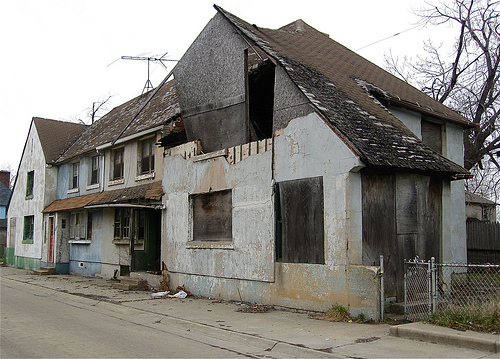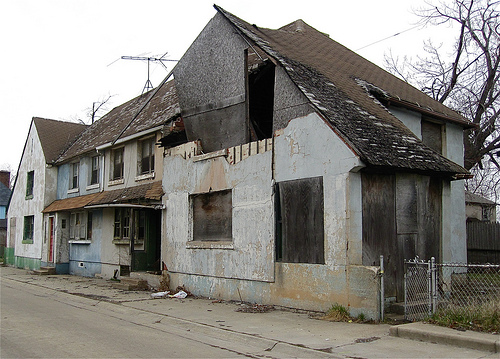 Abandoned in Chicago.Photo: ChicagoGeekBank of America has a new approach to dealing with foreclosed homes: Tear them down.
Abandoned in Chicago.Photo: ChicagoGeekBank of America has a new approach to dealing with foreclosed homes: Tear them down.
With a record number of American’s facing foreclosure, that might make your blood boil at first. But if you look into the plan a bit closer, there might be something to it. These homes are the worst that Bank of American has on its hands. The company has selected a relative handful of its most decrepit, derelict homes in Cleveland, Detroit, and Chicago and will pay up to $7,500 to local agencies toward demolition costs. That’s more than many of them are worth.
Bank of America isn’t the first mortgage holder to sacrifice its worst properties to a one-ton ball of steel, but it is the first to put some money towards demolition. Citigroup began donating foreclosed homes to housing agencies and nonprofits back in 2008. Fannie Mae started a similar program in 2009. Both have had help from the National Community Stabilization Trust, a nonprofit which works with lenders to get foreclosed homes into the hands of housing organizations. The group has been sucking up as many properties as it can.
The 100 homes Bank of America is demolishing in Cleveland are just a drop in the bucket. One report estimates there may be as many as 13,000 abandoned properties in the region, and that it would cost $250 million to remove them all. Another says Chicago has at least 5,000 that are beyond hope for rehabilitation.
Foreclosed homes are notorious for lowering the value of nearby homes, so removing these eyesores could be a step toward righting troubled neighborhoods. Was this extreme solution inevitable? That’s another question. It’s certainly possible that these homes were in poor condition to start, but foreclosed houses are often trashed by the time proceedings finish. If Bank of America and the other major banks had taken a more proactive stance on stemming the tide through loan modification programs — which were heartily encouraged by the Obama administration — they may have never had to face the wrecking ball at all.
But for these unfortunate houses, demolition is apparently the best option at this point, and it’s good to see Bank of America stepping up to foot the bill, even if it’s only for a small number. The land under these abandoned houses will be far more valuable to the communities they currently blight once they’re cleared away. The hope is that these lots can be used for parks, urban farms, or new homes. Let’s hope Bank of America and the other lenders see the wisdom of expanding this plan to help get our troubled neighborhoods back on track.
Bonus: Check out a proposal to transform Chicago’s abandoned properties into “something the neighborhood can be proud of — without demonizing property owners or displacing honest, hard-working residents.”



